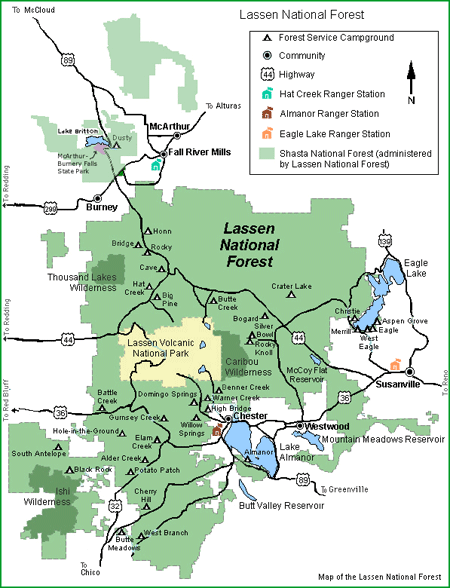Lassen National Forest

In the summer of 2014, the adjacent Eiler and Bald fires spanned 14,962 acres and 31,419 acres, respectively, mostly on the Hat Creek Ranger District of the Lassen National Forest, and together restored approximately 10,000 acres of rare complex early seral forest habitat to the landscape.
Even including these two fire less than 5% of the Lassen National Forest is comprised of complex early seral forest. This is due to the management policies of this forest including: fire suppression (preventing the fires from burning in the first place); post-fire logging (removing the forest if a fire does occur); removal of native shrubs (with ground based logging equipment and herbicides) both before and after a fire burns; and artificial tree plantation establishment.
The Lassen National Forest is now proposing to eliminate most of this rare and highly biodiverse habitat through post-fire logging, native shrub removal, and artificial tree plantation establishment.
Eiler Project
The Forest Service asserts that over 75% of the 14,962 acres which burned on National Forest Lands burned at moderate or high intensity. This is an overestimation because many of the trees they catalogued as dead will in fact sprout new foliage from the buds at the end of their branches (i.e., terminal buds) to regrow their canopy, or flush, and survive long-term.
Approximately 67% of the area which experienced the fire (or 9,950 acres) burned in mature and old conifer forests. Falsely characterizing these areas as having been “deforested” the Forest Service is now proposing to remove 65% (or 6,500 acres) of complex early seal forest habitat through clear-cut logging. The areas proposed for logging represents the best habitat (the areas of mature and old forest which burned the most intensely) created by the fire. Rather than admit this, the Lassen National Forest refuses to even identify conserving wildlife associated with complex early seral forests as a consideration of the project – listing their number one priority as feeding timber to the local timber mill, owned and operated by Sierra Pacific Industries, the largest landowner in the state of California.
The Forest Service’s initial proposal utterly fails to acknowledge the importance of post-fire habitat or the rich biodiversity which will be lost if this logging takes place. In addition their proposal also permits them to remove live trees! This is the antithesis of “survival of the fittest”, as the trees which survived the fire are the very ones which have the best chance of surviving the next fire and will produce seedlings which will also have the best chance of surviving future fires. This Elier project proposal harkens back to the 1980’s, refusing to incorporate the scientific advancements and knowledge regarding forests and fire ecology and the species which depend on complex early seal forest habitat (i.e., mature and old forest which burns at high intensity).
The Draft Environmental Assessment for the Eiler Project is due out in mid-April 2015.
Bald Project
Like the Eiler Project, which is being planned by the same people, the Bald Project relies on the outdated 2004 Sierra Nevada Framework Forest Plan Amendment to support a project which ignores all the current science related to forests and fire ecology – including the high biodiversity of rare species which depend upon and inhabit mature and old forest which burns at high intensity.
The Bald Project burned across 31,420 acres. Approximately 22,000 acres of timber land on the Lassen National Forests burned. Again the Forest Service is overstating the portion of the fire that burned at high intensity (58%) in order to support their proposal to clearcut over half (50%) of the best habitat created by this restorative fire.
The Draft Environmental Assessment for the Bald Project is due out in mid-April 2015.
